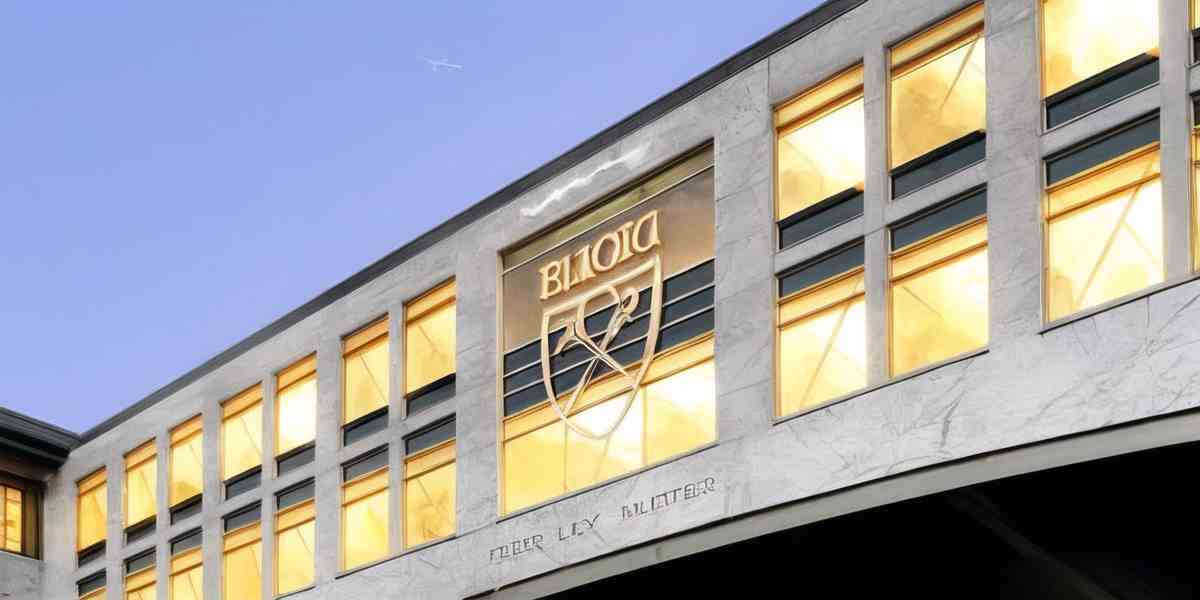Emory University
2024 USNews Best Colleges Ranking: 24(↓2) (Click for schools/majors ranking)
School Characteristics: Private, non-Profit (4-Years)
Calendar systerm: Semester
Religious Affiliation: United Methodist
School Chief: Gregory L. Fenves (President)
Website: www.emory.edu/; Phone: 4047276123
Location: 201 Dowman Drive, Atlanta, GA, 30322

Emory University Important Facts
Emory University Ranking and Admission
Emory University Admission Score Requires
*Numbers at left represent SAT/ACT submitting percentage, numbers on blue blocks represent 25%-75% admission scores
**Drag green block to check data for different years, click blue block to check scores trends
Emory University Students Age Distribution
Emory University International Students Trends
Emory University Campus and Safety
Nearby Top Colleges
Campus Safety
Reference
- Emory University Official Website
- USNews Best Colleges Ranking
- USNews Bset Global Universities Ranking
- THE World University Ranking
- QS World University Ranking
- ARWU World University Ranking
- US Department of Education College Scorecard
- National Center for Education Statistics
- Forward Pathway US College Ranking Database
 Emory University Important Facts Trends
Emory University Important Facts Trends
 Emory University degrees/majors
Emory University degrees/majors
Emory University major details
*Depends on whether majors have graduates in 2022 or not, Yes / No
**Move mouse on can check deitaled graudates number, click for major detailed information
***Due to privacy policy, graduate salaries are not shown for some majors that has few gradautes
| Major | Graduate Salary | Under | Master | Doctor |
|---|---|---|---|---|
| Business/Commerce, General. | $168,101 | |||
| Business Administration and Management, General. | $107,945-$164,249 | |||
| Accounting. | - | |||
| Accounting and Business/Management. | - | |||
| Management Science. | - | |||
| Management Sciences and Quantitative Methods, Other. | - |
| Major | Graduate Salary | Under | Master | Doctor |
|---|---|---|---|---|
| Biology/Biological Sciences, General. | $48,491-$88,802 | |||
| Biomedical Sciences, General. | $48,491-$88,802 | |||
| Biophysics. | - | |||
| Human/Medical Genetics. | - | |||
| Biostatistics. | - | |||
| Epidemiology. | $80,932 | |||
| Neuroscience. | $47,845 |
| Major | Graduate Salary | Under | Master | Doctor |
|---|---|---|---|---|
| Law. | $112,488 | |||
| Advanced Legal Research/Studies, General. | $87,848 | |||
| Legal Research and Advanced Professional Studies, Other. | $87,848 |
| Major | Graduate Salary | Under | Master | Doctor |
|---|---|---|---|---|
| Anthropology, General. | $53,024 | |||
| Econometrics and Quantitative Economics. | $86,679 | |||
| Development Economics and International Development. | $86,679 | |||
| International Relations and Affairs. | $61,472 | |||
| Political Science and Government, General. | $56,441 | |||
| Sociology, General. | $56,032 |
| Major | Graduate Salary | Under | Master | Doctor |
|---|---|---|---|---|
| Mathematics, General. | - | |||
| Applied Mathematics, General. | $68,584 | |||
| Statistics, General. | - | |||
| Mathematics and Statistics. | - | |||
| Mathematics and Statistics, Other. | - |
| Major | Graduate Salary | Under | Master | Doctor |
|---|---|---|---|---|
| Religious Education. | - | |||
| Theology/Theological Studies. | $54,099 | |||
| Divinity/Ministry. | $54,099 | |||
| Pastoral Studies/Counseling. | - | |||
| Youth Ministry. | - | |||
| Theology and Religious Vocations, Other. | - |
| Major | Graduate Salary | Under | Master | Doctor |
|---|---|---|---|---|
| Psychology, General. | $52,842 | |||
| Cognitive Psychology and Psycholinguistics. | - |
| Major | Graduate Salary | Under | Master | Doctor |
|---|---|---|---|---|
| Physical Sciences, General. | - | |||
| Astronomy and Astrophysics, Other. | - | |||
| Chemistry, General. | $54,509 | |||
| Physics, General. | - |
| Major | Graduate Salary | Under | Master | Doctor |
|---|---|---|---|---|
| Informatics. | - | |||
| Computer Science. | $133,212 |
| Major | Graduate Salary | Under | Master | Doctor |
|---|---|---|---|---|
| Sports, Kinesiology, and Physical Education/Fitness, General. | $52,404 | |||
| Sports, Kinesiology, and Physical Education/Fitness, Other. | $52,404 |
| Major | Graduate Salary | Under | Master | Doctor |
|---|---|---|---|---|
| Philosophy. | - | |||
| Religion/Religious Studies. | $64,274 | |||
| Islamic Studies. | $64,274 | |||
| Jewish/Judaic Studies. | $64,274 |
| Major | Graduate Salary | Under | Master | Doctor |
|---|---|---|---|---|
| English Language and Literature, General. | $51,789 | |||
| Creative Writing. | - |
| Major | Graduate Salary | Under | Master | Doctor |
|---|---|---|---|---|
| Dance, General. | - | |||
| Drama and Dramatics/Theatre Arts, General. | - | |||
| Playwriting and Screenwriting. | - | |||
| Film/Cinema/Media Studies. | - | |||
| Art History, Criticism and Conservation. | - | |||
| Music, General. | - |
| Major | Graduate Salary | Under | Master | Doctor |
|---|---|---|---|---|
| History, General. | $50,737 |
| Major | Graduate Salary | Under | Master | Doctor |
|---|---|---|---|---|
| Bioengineering and Biomedical Engineering. | - |
| Major | Graduate Salary | Under | Master | Doctor |
|---|---|---|---|---|
| Linguistics. | $50,216 | |||
| Comparative Literature. | $50,216 | |||
| Chinese Language and Literature. | - | |||
| Japanese Language and Literature. | - | |||
| Romance Languages, Literatures, and Linguistics, General. | $59,402 | |||
| French Language and Literature. | $59,402 | |||
| Spanish Language and Literature. | $59,402 | |||
| Arabic Language and Literature. | - | |||
| Classics and Classical Languages, Literatures, and Linguistics, General. | - | |||
| Latin Language and Literature. | - |
| Major | Graduate Salary | Under | Master | Doctor |
|---|---|---|---|---|
| Environmental Studies. | $52,860 | |||
| Environmental Science. | $52,860 |
| Major | Graduate Salary | Under | Master | Doctor |
|---|---|---|---|---|
| Mathematics and Computer Science. | - | |||
| Behavioral Sciences. | - | |||
| Nutrition Sciences. | - | |||
| Ancient Studies/Civilization. | - | |||
| Classical, Ancient Mediterranean, and Near Eastern Studies and Archaeology. | - | |||
| Multi-/Interdisciplinary Studies, Other. | $72,067 |
| Major | Graduate Salary | Under | Master | Doctor |
|---|---|---|---|---|
| African Studies. | $77,707 | |||
| American/United States Studies/Civilization. | $77,707 | |||
| East Asian Studies. | $77,707 | |||
| Latin American Studies. | $77,707 | |||
| Near and Middle Eastern Studies. | $77,707 | |||
| Russian Studies. | $77,707 | |||
| French Studies. | $77,707 | |||
| German Studies. | $77,707 | |||
| Italian Studies. | $77,707 | |||
| African-American/Black Studies. | - | |||
| Women's Studies. | - |
| Major | Graduate Salary | Under | Master | Doctor |
|---|---|---|---|---|
| Humanities/Humanistic Studies. | $45,415 |
| Major | Graduate Salary | Under | Master | Doctor |
|---|---|---|---|---|
| Public Policy Analysis, General. | - |
| Major | Graduate Salary | Under | Master | Doctor |
|---|---|---|---|---|
| Communication and Media Studies, Other. | - |
 Emory University Schools/Majors Ranking
Emory University Schools/Majors Ranking
Under Ranking (2024)
World University Ranking
Grad Ranking (2025)
- Nursing School# 1(→)
- Business School# 18(↓1)-
- Law School# 42(↓7)+
- Contracts Law# 21(↑2)
- Health Care Law# 21(↑8)
- Business/Corporate Law# 22(↑3)
- Constitutional Law# 25(↑4)
- Trial Advocacy# 27(↑8)
- International Law# 33(↑5)
- Criminal Law# 34(↑2)
- Environmental Law# 42(↑16)
- Intellectual Property Law# 44(↓13)
- Tax Law# 49(↑32)
- Dispute Resolution# 51(↓1)
- Legal Writing# 51(↓9)
- Clinical Training# 95(↓6)
- Medical School (Research)# 23(↓1)
- Medical School (Primary Care)# 64(↓22)
- Health Specialty+
- Science+
- Social Sciences and Humanities+
- Engineering School+
*Rankings have been updated to 2025USNews schools/majors ranking, rankings are for reference only
*numbers in bracket represent rankings change compare to last version
 Emory University Varsity Athletes
Emory University Varsity Athletes
| NCAA Division III without football | MEN | WOMEN |
|---|---|---|
| Track and Field and Cross Country (combined) | 133 | 132 |
| Swimming and Diving (combined) | 50 | 42 |
| Soccer | 31 | 32 |
| Baseball | 35 | - |
| Basketball | 16 | 15 |
| Tennis | 15 | 10 |
| Golf | 14 | 10 |
| Volleyball | - | 21 |
| Softball | - | 12 |
| NCAA Division III without football | MEN | WOMEN |
|---|---|---|
| Track and Field, Outdoor | 39 | 37 |
| Baseball | 37 | - |
| Tennis | 16 | 15 |
| Golf | 8 | 8 |
| Softball | - | 13 |
| NCAA Division III without football | MEN | WOMEN |
|---|---|---|
| All Track Combined | 128 | 125 |
| Swimming and Diving | 43 | 34 |
| Soccer | 31 | 30 |
| Baseball | 33 | - |
| Basketball | 14 | 13 |
| Tennis | 14 | 12 |
| Volleyball | - | 25 |
| Golf | 10 | 7 |
| Softball | - | 14 |
| Track and Field, Outdoor | - | - |
| Weight Lifting | - | - |
| Track and Field, X-Country | - | - |
| Water Polo | - | - |
| Wrestling | - | - |
| Other Sports | - | - |
| Archery | - | - |
| Badminton | - | - |
| Beach Volleyball | - | - |
| Bowling | - | - |
| Equestrian | - | - |
| Rodeo | - | - |
| Sailing | - | - |
| Table Tennis | - | - |
| Track and Field, Indoor | - | - |
| Team Handball | - | - |
| Synchronized Swimming | - | - |
| Swimming | - | - |
| Squash | - | - |
| Skiing | - | - |
| Rowing | - | - |
| Rifle | - | - |
| Lacrosse | - | - |
| Ice Hockey | - | - |
| Gymnastics | - | - |
| Football | - | - |
| Field Hockey | - | - |
| Fencing | - | - |
| Diving | - | - |

 Emory University Important Facts Trends
Emory University Important Facts Trends
















































































































































































































































































































































































































































